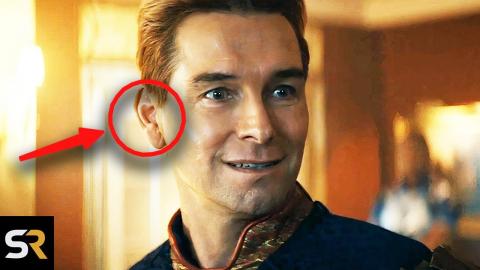The Big Thanos Plot Hole In Endgame Finally Explained
Description
Making a three-hour-long superhero film is no small feat. Co-directors Joe and Anthony Russo did an admirable job with Avengers: Endgame, filling the film with loads of plot without ever overwhelming fans. At the end of the day, it's a remarkable juggling act. That said, a few confusing sections passed by without any kind of explanation, no doubt leaving audiences with questions. Warning: You're now entering Spoiler Country.
One of the biggest headscratchers occurred when Thanos called members of his Black Order and countless Chitauri from the past, bringing them to the present for the final battle against the Avengers. Sure, it makes sense that he'd want to use a huge army to take down Earth's Mightiest Heroes. But the movie never quite explains how Thanos does it. Fortunately, co-director Joe Russo is here to explain away that particular plot hole.
Speaking to Chinese-language website QQ, Russo discussed Thanos' use of Pym Particles to travel into his future and battle the Avengers. The film shows past-Nebula stealing a vial of Pym Particles from present-Nebula. The rare subatomic particle was discovered by Dr. Hank Pym and subsequently handed off to Thanos. That explains how Thanos was able to flash-forward a few years and face off against his foes, but it doesn't explain how his army or his massive ship were able to do the same.
According to Russo, this plot hole can be pretty easily patched up. You see, Thanos had the help of his dastardly acolyte Ebony Maw, and they managed to replicate the Pym Particles, making enough to bring everyone from their present to the future through the Quantum Realm. Got that?
The website Comic Book Movie helpfully translated Russo's explanation:
"Those two easily reverse engineered and mass produced Pym Particles."
The story more or less checks out. It's easy to believe Thanos and Ebony Maw could figure out a way to duplicate the scientific work of the super-smart, but still human Hank Pym on a monumental scale. Remember: Maw and Thanos both happen to be brilliant, evil geniuses.
At the end of Avengers: Endgame, Iron Man snatched the Infinity Stones from Thanos and loaded them up into his own suit. Thanos and his minions disintegrated into dust. And we imagine any leftover Pym Particles disintegrated, too. If you're sitting around worrying about how these mass-produced Pym Particles might create more plot holes in the future, you can rest easy tonight: all of those Pym Particles were probably decimated the minute Iron Man put the Infinity Stones to use.
Considering its size and scope, there were bound to be at least a few plot holes in Avengers: Endgame. The time travel aspect of the film is kinda difficult to unravel, and it's bound to affect the Marvel Cinematic Universe in the future, too. Here's one tidbit that somewhat clears things up: Russo claims Endgame doesn't operate on a closed time loop:
"You can't change the future by simply going back to the past, but it's possible to create a different alternate future. It's not a butterfly effect."
Words to live by! After seeing Avengers: Endgame, fans are surely wondering how the MCU will look and feel from here on out. While Russo was more than happy to spill details about Endgame, he stayed quiet about what's coming next.
What we do know: Spider-Man: Far From Home picks up mere minutes after Avengers: Endgame. The film will show us what's going on now that half the population has snapped back to life after spending five years in the void. We imagine everyone's in a pretty good mood. Well, almost everybody.
The Spidey sequel almost certainly won't deal with any time travel, and that's for the best. For the sake of avoiding even more plot holes, we sincerely hope Far From Home stays in the here and now. Who knows what'll happen next? We'll be playing the waiting game until the film hits theaters on July 5th, 2019.














